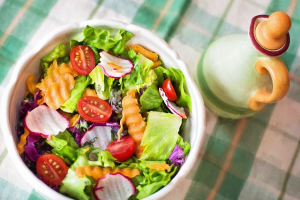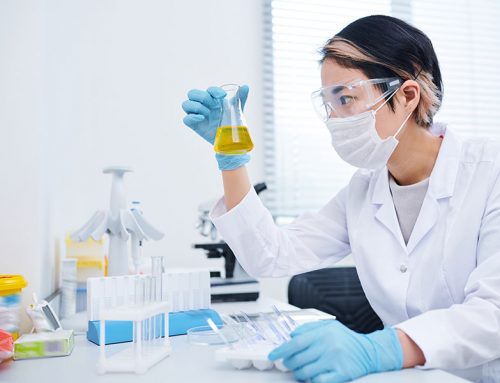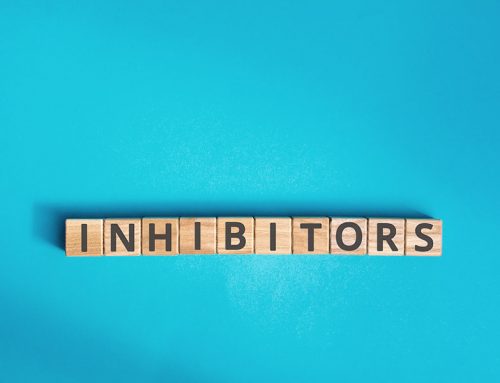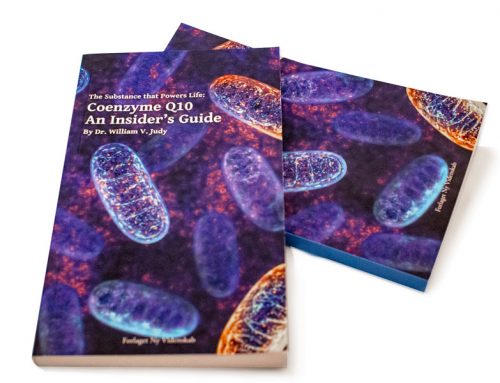
As we age beyond our 30s into middle age and old age, our bodies produce less and less Coenzyme Q10, but our need for Coenzyme Q10, especially for good heart health, does not decline. Healthy meals, even meals containing meat and fish, cannot make up the difference. We need a good daily supplement.
In this three-part series of articles, we have been discussing the absorption and bio-availability of the vital bio-nutrient Coenzyme Q10. As we come into middle age and then into our senior years, we produce less and less Coenzyme Q10 ourselves. Plus, certain medications — statin medications in particular — inhibit our bodies’ production of Coenzyme Q10 even more. And, we know that adequate intakes of Coenzyme Q10 are necessary for good heart health and a decent quality of life.
We need perhaps 3.5 milligrams of Coenzyme Q10 per day total, depending on our body size and exercise level. From the food we eat, we are likely to get at most half of one milligram per day, again depending on what and how much we eat. The rest of our requirement has to be made up from a combination of our own bio-synthesis of Coenzyme Q10 and a daily supplement.
Coenzyme Q10 is difficult to absorb
The Coenzyme Q10 molecules are relatively large fat-soluble molecules. So, the molecules are hydrophobic. They need a carrier monoglyceride to get them through the watery phase in the small intestine to the absorption cells.
Moreover, the Coenzyme Q10 raw material is crystalline in form. During the production of the Coenzyme Q10 supplements, these crystals must be dissociated to single molecules for later absorption to take place. The human body simply cannot absorb the crystals. Consequently, it is important that the Coenzyme Q10 not re-crystallize to any appreciable degree when it is enclosed in the soft-gel capsules.
The absorption percentage of a 100-milligram capsule tends to be low, ranging from a fairly typical 2.5 % to 4 % up to 6 % to 8 % for the very best formulations of the Coenzyme Q10 supplement [Judy].
Necessary daily amount of dietary and supplemental Coenzyme Q10
We know from the Weber study that a typical Danish diet contains between 3 and 5 milligrams of Coenzyme Q10 per day. The typical American diet probably does not differ much, in its Coenzyme Q10 content, from the typical Danish diet except in the case of vegetarians and vegans and other individuals on special diets. They will need a Coenzyme Q10 supplement even more than most people.
Absorption of Coenzyme Q10 from food is difficult to measure. However, a good estimate is that the total daily absorption of Coenzyme Q10 from our food is about 0.4 milligrams (8% of 5 milligrams)[Weber].

According to Dr. William Judy, SIBR Research Institute, there is, theoretically, an upper limit to the amount of Coenzyme Q10 that can be absorbed from a nutritional supplement. That limit, given the specific characteristics of the Coenzyme Q10 molecules, is estimated to be about 15%. Even the very best formulations will probably never be able to exceed that rate of absorption.
How much Coenzyme Q10 do we need from our food and supplements?
Dr. William Judy of the SIBR Research Institute estimates that a healthy middle-aged person needs to synthesize and/or absorb 3.5 milligrams of Coenzyme Q10 daily [Judy 2017].
Daily Coenzyme Q10 supplement clearly needed
Given that we, most of us, get approximately 0.4 milligrams of Coenzyme Q10 per day from our food, it seems clear that we need a daily Coenzyme Q10 supplement.
For me, the Coenzyme Q10 supplement ranks right up there with the fish oil capsule, the vitamin D capsule, and the selenium tablet in terms of importance.
Food plus a 100-milligram supplement (2 % – 3.5 % absorption) should put most of us at the optimal daily level of intake that we need, doesn’t that seem right?
What promotes good absorption of Coenzyme Q10?
In 2005, Singh and a team of researchers reported the following research results for the Coenzyme Q10 nutritional supplements. In their research, Singh et al used the same Coenzyme Q10 supplement that would be used in the Q-Symbio study of the effect of Coenzyme Q10 on morbidity and mortality in chronic heart failure patients.
- There is a dose-dependent response to Coenzyme Q10 supplementation. Larger doses do result in greater absorption; however, the dose-absorption graph is not linear – at higher dosages, the graph of the absorption levels gently bends and the continued increase in absorption is not in proportion to the increase in dosage.
- Coenzyme Q10 raw material dissolved in an oil matrix is more effectively absorbed than the same amount of dry-powder crystalline Coenzyme Q10. (This is the formulation used in the Q-Symbio study)
- 200 milligrams of the matrix oil/soft gel formulation of Coenzyme Q10 will cause a greater increase in Coenzyme Q10 serum levels than 100 milligrams of the same formulation will.
- Divided dosages (2 x 100 milligrams daily) of Coenzyme Q10 will cause a greater increase in the serum levels of Coenzyme Q10 than a single daily dose of 200 milligrams will [Singh 2005].
Absorption results in randomized controlled studies
A look at the results of randomized controlled studies of supplementation with the same Coenzyme Q10 formulation that was used in the Q-Symbio study will give us an idea of the absorption that can be achieved:
Zita study: 1 x 100 milligrams of Coenzyme Q10 daily in a study of healthy Prague policemen raised the study participants’ Coenzyme Q10 levels from 1.23 micrograms per milliliter to 2.59 micrograms per milliliter.
Munkholm study: 2 x 100 milligrams of Coenzyme Q10 daily in heart failure patients raised the study participants’ Coenzyme Q10 levels from 1.09 micrograms per milliliter to 3.25 micrograms per milliliter.
Fedacko study: 2 x 100 milligrams of Coenzyme Q10 daily together with 200 micrograms of an organic high selenium yeast daily in patients on statin medications raised the study participants’ Coenzyme Q10 levels from 0.81 micrograms per milliliter to 3.31 micrograms per milliliter.
Mortensen study (the Q-Symbio study): 3 x 100 milligrams of Coenzyme Q10 daily in heart failure patients raised the study participants’ Coenzyme Q10 levels from 1.14 micrograms per milliliter to 3.01 micrograms per milliliter.
Remember: The International Coenzyme Q10 Association has recommended a plasma Coenzyme Q10 level of at least 2.5 micrograms per milliliter.
It is interesting to see, above, how relatively low the baseline Coenzyme Q10 levels were in the patients taking the statin medications [Fedacko].
Summary
- A daily Coenzyme Q10 nutritional supplement is necessary. We cannot get enough Coenzyme Q10 from our food on a daily basis.
- The formulation of the Coenzyme Q10 nutritional supplement is the most important aspect of absorption.
- We need to take the Coenzyme Q10 supplement together with a meal that contains some amount of fat.
- Coenzyme Q10 nutritional supplements are safe and affordable.
- There is no reason to pay extra for the ubiquinol version of the Coenzyme Q10 supplement. The much more stable and much more researched ubiquinone version will provide the Coenzyme Q10 that we need.
- The best evidence of good absorption is the documentation of beneficial health effects in randomized controlled trials like the Q-Symbio study, the KiSel-10 study, and the Gulf War Veterans study.
Sources:
Fedacko, J., Pella, D., Fedackova, P., Hänninen, O., Tuomainen, P., Jarcuska, P., & Littarru, G. P. (2013). Coenzyme Q(10) and selenium in statin-associated myopathy treatment. Canadian Journal Of Physiology And Pharmacology, 91(2), 165-170. doi:10.1139/cjpp-2012-0118.
Judy, W. V. (2017). Private communication.
Mortensen, S. A., Rosenfeldt, F., Kumar, A., Dolliner, P., Filipiak, K. J., Pella, D., & Littarru, G. P. (2014). The effect of coenzyme Q10 on morbidity and mortality in chronic heart failure: results from Q-SYMBIO: a randomized double-blind trial. JACC. Heart Failure, 2(6), 641-649.
Singh, R. B., Niaz, M. A., Kumar, A., Sindberg, C. D., Moesgaard, S., & Littarru, G. P. (2005). Effect on absorption and oxidative stress of different oral Coenzyme Q10 dosages and intake strategy in healthy men. Biofactors (Oxford, England), 25(1-4), 219-224.
Weber, C., Bysted, A., & Hølmer, G. (1997). The Coenzyme Q10 content of the average Danish diet. Int J Vitam Nutr Res, 67:123-9.
Zita, C., Overvad, K., Mortensen, S. A., Sindberg, C. D., Moesgaard, S., & Hunter, D. A. (2003). Serum coenzyme Q10 concentrations in healthy men supplemented with 30 mg or 100 mg coenzyme Q10 for two months in a randomised controlled study. Biofactors (Oxford, England), 18(1-4), 185-193.









Leave A Comment